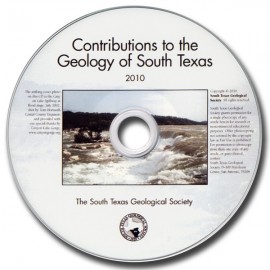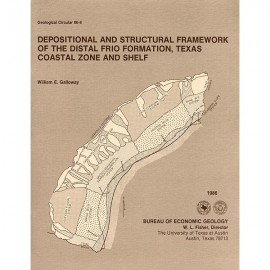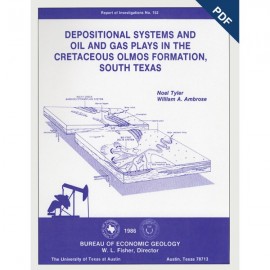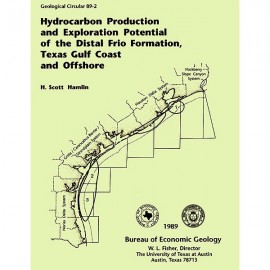Reports of Investigations
-
Books & Reports
- Reports of Investigations
- Guidebooks
- Udden Series
- Geological Circulars
- Down To Earth
- Atlases of Major Oil and Gas Reservoirs
- Texas Memorial Museum Publications
- Environmental Geologic Atlas of the Texas Coastal Zone
- Mineral Resource Circulars
- Other Reports
- Seminars and Workshops
- Handbooks
- Submerged Lands of Texas
- Symposia
- Annual Reports
- Open File Reports
-
Maps & Cross Sections
- Thematic Maps
- Miscellaneous Maps, Charts & Sections
- Geologic Atlas of Texas
- STATEMAP Project Maps
- Geologic Quadrangle Maps
- Cross Sections
- Highway Geology Map
- Energy and Mineral Resource Maps
- Shoreline Change and Other Posters
- Wilcox Group, East Texas, Geological / Hydrological Folios
- Bouguer Gravity Atlas of Texas
- River Basin Regional Studies
- Featured Maps
- Posters
- Teachers & the Public
-
Geological Society Publications
- Gulf Coast Association of Geological Societies
- Alabama Geological Society
- Austin Geological Society
- Corpus Christi Geological Society
- Houston Geological Society
- Lafayette Geological Society
- Mississippi Geological Society
- New Orleans Geological Society
- South Texas Geological Society
- GCS SEPM Publications
- Historic BEG & UT Series
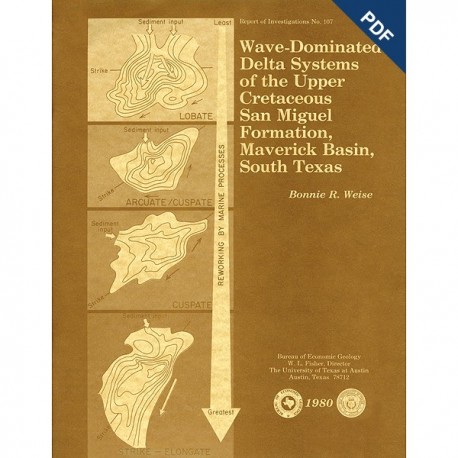
Wave-Dominated Delta Systems of...Cretaceous San Miguel Formation, Maverick Basin, South Texas. Digital Download
RI0107D
A free, digital version of this publication can be found on: Texas ScholarWorks
To purchase a print version (if available): RI0107
RI0107D. Wave-Dominated Delta Systems of the Upper Cretaceous San Miguel Formation, Maverick Basin, South Texas, by B. R. Weise. 39 p., 36 figs., 1 table, 9 plates, 1980. doi.org/10.23867/RI107D. Downloadable PDF.
To purchase this publication in book format, please order RI0107.
ABSTRACT
Upward-coarsening sandstone units of the Upper Cretaceous San Miguel Formation in South Texas were deposited in wave-dominated deltas during minor regressive phases, periodically interrupting a major marine transgression. Sediments accumulated in the Maverick Basin within the Rio Grande Embayment. Cross sections and sandstone maps reveal that during deposition of the San Miguel, the Maverick Basin consisted of two subbasins that received sediments from the northwest and the north.
Net-sandstone patterns show that the thickest parts of San Miguel sandstone bodies are generally strike oriented. Where preserved, updip fluvial systems are indicated by dip-aligned sandstone trends. San Miguel deltas vary considerably in morphology and compose a spectrum of wave-dominated delta types. Modern analogs of San Miguel deltas include the Rhone, Nile, Sao Francisco, Brazos, Danube, Kelantan, Grijalva, and Senegal deltas. Sandstone geometry ultimately depended on three primary factors: (1) rate of sediment input, (2) wave energy, and (3) rate of relative sea-level change. Original delta morphology was determined by all three factors, but the degree of reworking of deltaic sediments after delta abandonment was determined by wave energy and rate of transgression.
The most common vertical sequences exhibited by the subsurface San Miguel coarsen upward from mudstone and siltstone to fine sandstone. Burrows are the dominant structures. Rare primary structures are small scale; large-scale crossbeds are observed only in outcrop. Strandplain or barrier-island facies sequences, which prevail in most wave-dominated delta deposits, are incomplete in the San Miguel. Typically, only the lower shoreface is preserved. Upper parts of the sequences, which normally containlarge-scale primary structures, were destroyed by marine reworking during subsequent transgression. Intense burrowing obliterated primary structures in the upper parts of the truncated shoreface sequences.
Most of the San Miguel sandstones are arkoses, but the mineralogical composition of the sandstones changes vertically. Generally within each sandstone, quartz content increases upward with increasing mean grain size. Cements include sparry and poikilotopic calcite, quartz overgrowths, feldspar overgrowths, illite rims, and kaolinite. Porosity was eliminated principally by two types of calcite cement, which tend to cement completely the coarsest, best sorted, and originally most porous zones of the San Miguel sandstones. Zones of secondary porosity resulted from leaching of shell material, calcite cement, and feldspars. Laterally, the distribution of high secondary porosity and calcite-cemented zones is unpredictable.
Keywords: Upper Cretaceous, San Miguel Formation, wave-dominated deltas, Maverick Basin, Rio Grande Embayment, South Texas, Texas, upward-coarsening sandstone
Citation
Weise, B. R., 1980, Wave-Dominated Delta Systems of the Upper Cretaceous San Miguel Formation, Maverick Basin, South Texas: The University of Texas at Austin, Bureau of Economic Geology, Report of Investigations No. 107, 39 p.

